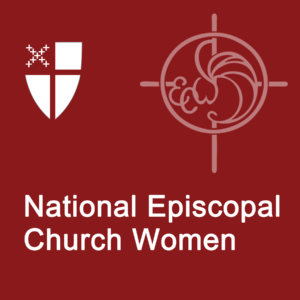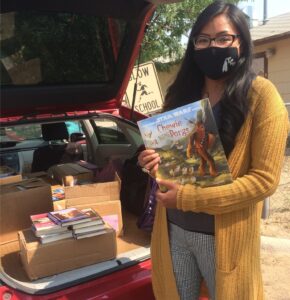Project Undercover
 by Margaret Noel – Province 1 Representative, NECW
by Margaret Noel – Province 1 Representative, NECW
Rhode Island Project Undercover received a donation of 100,000 period products from U by Kotex through the Alliance for Period Supplies to support efforts to end period poverty.
One in four women struggle to purchase period products due to a lack of income. In my state of Rhode Island, one in six women and girls ages 12 to 44 lives below the Federal Poverty Line. Also, one in five low-income women in the US report missing work, school or similar commitments and one in four teens in the US have missed class due to lack of access to period products.
I would like to highlight three organizations that are most helpful in working toward ending period poverty in the United States:
Project Undercover Rhode Island was founded in 1992 with the mission to meet the emergency needs of 20,000 kids by supplying over one million diapers and 180,000 pairs of underwear and socks every year. But they realized period poverty is not only a growing public health issue nationwide; period poverty is a real issue in Rhode Island. And the need for help has grown significantly, according to Richard Fleischer, founder and president of Project Undercover. Sales tax on period supplies places an unequal burden on individuals who menstruate. Thirty states tax period supplies. Rhode Island DOES NOT. Project Undercover, a member of the Alliance for Period Supplies, collects material basic necessities and distributes them to more than two dozen community action partnerships and social service agencies throughout the state based on data from the RI Department of Human Services.
The Alliance for Period Supplies is an initiative of the National Diaper Bank Network (NDBN) — a 501©(3) nonprofit that leads a nationwide movement aimed at helping individuals and families struggling to afford material basic needs. Launched in May 2018, with the support of founding sponsor U by Kotex, the Alliance for Period Supplies raises national awareness of period poverty (#periodpoverty) and supports the development and expansion of period supply programs in communities throughout the country. The organization is comprised of more than 115 allied programs that collect, warehouse and distribute menstrual/period supplies in local communities. “We can end period poverty in the US by increasing awareness of the issue, expanding community-based programs like Project Undercover and advocating for changes in public policy,” said Jennifer Gaines, program director at the Alliance for Period Supplies.
Sponsor U by Kotex® believes nothing should stand in the way of women achieving their dreams. Especially not having access to feminine products. As the founding sponsor of the Alliance for Period Supplies, they have already donated 30 million period products to help women in need. They’re committed to the fight to end period poverty. Let’s make a difference together.
For more information or to donate go to: Allianceforperiodsupplies.org

 by Mary Beth Welch – Province IV Representative, NECW
by Mary Beth Welch – Province IV Representative, NECW Escrito por Connie Sanchez – Representante de la Provincia IX, NECW
Escrito por Connie Sanchez – Representante de la Provincia IX, NECW Escrito por Cynthia Davis – Coordinadora del ministerio de mujeres de la Diocesis de Rio Grande
Escrito por Cynthia Davis – Coordinadora del ministerio de mujeres de la Diocesis de Rio Grande Escrito por el Reverendo Ema Rosero-Nordalm
Escrito por el Reverendo Ema Rosero-Nordalm